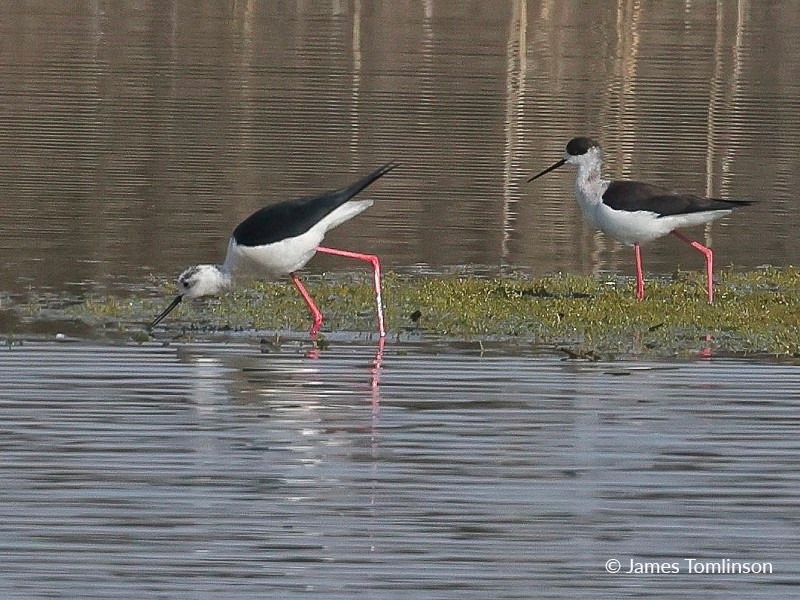Black-winged stilts are a rare sight in Britain, but over the last 10 years they have become more regular and some pairs have nested.
This is what the ‘Birds and other vertebrates’ report had to say:
Very rare vagrant – seven confirmed records with increasing numbers in the last couple of years:
1949: three on 9 May 1949.
1978: male at Ternery Pool from dawn on 11 June to 6:30pm on 12 June.
2017: one on 2 June at Rye Harbour Farm.
2018: Two from 8 April to 10 April followed by three on 25 May and 28 May.
2019: Two from 17 April to 19 April on Rye Harbour Farm.
2020: One at Castle Water 11 June
But 2021 was different
27 April: a pair of stilts were seen and photographed at Castle Water by James Tomlinson
1 May: both were seen again, then singles were regular at Castle Water, but only in an area not accessible to the public and difficult to view. This is when we suspected they could be nesting on an island that had been prepared for nesting waders the autumn before.
The island vegetation was cut down to ground level and the island surrounded by a fence in the water to deter swimming foxes and badgers.
20 May: a stilt was seen from the Halpin hide by a visitor and the report got on to Birdguides and Rare Bird Alert Birdnews, but both were promptly taken down, due to the rarity of the species and difficulty in viewing.
2 June: the adults’ behaviour changed to the pair chasing off potential predators – marsh harrier, herring gulls, carrion crows, raven and little egrets – this meant that they had nested and they had hatched. With an incubation period of 25 days and four days to lay eggs, this gets back to about 4 May for the start of nesting.
Pair of stilts chasing off Little Egret from where their chick is.
5 June: three stilt chicks was seen.
17 June: four chicks were seen, one smaller than others.
30 June: the pair with a single chick (which at four weeks old was very small) were seen on the same island and again on July 4. It is possible that some of the three larger chicks were there but not seen, because of the tall vegetation.
7 July: the day after a big storm, both parents were still present and alarming, but no chicks were seen.
8 July: one adult was seen near the nesting island.
9 July: during the afternoon one adult and one fledged chick were seen.
This 0.12 hectare island also had three pairs of lapwing, two redshank and an oystercatcher nesting and they all raised some young.
This brings the number of breeding birds at Rye Harbour Nature Reserve to 101 and breeding waders to eight species.
Follow this link for videos of the black-winged stilts.
Image Credits: James Tomlinson .



